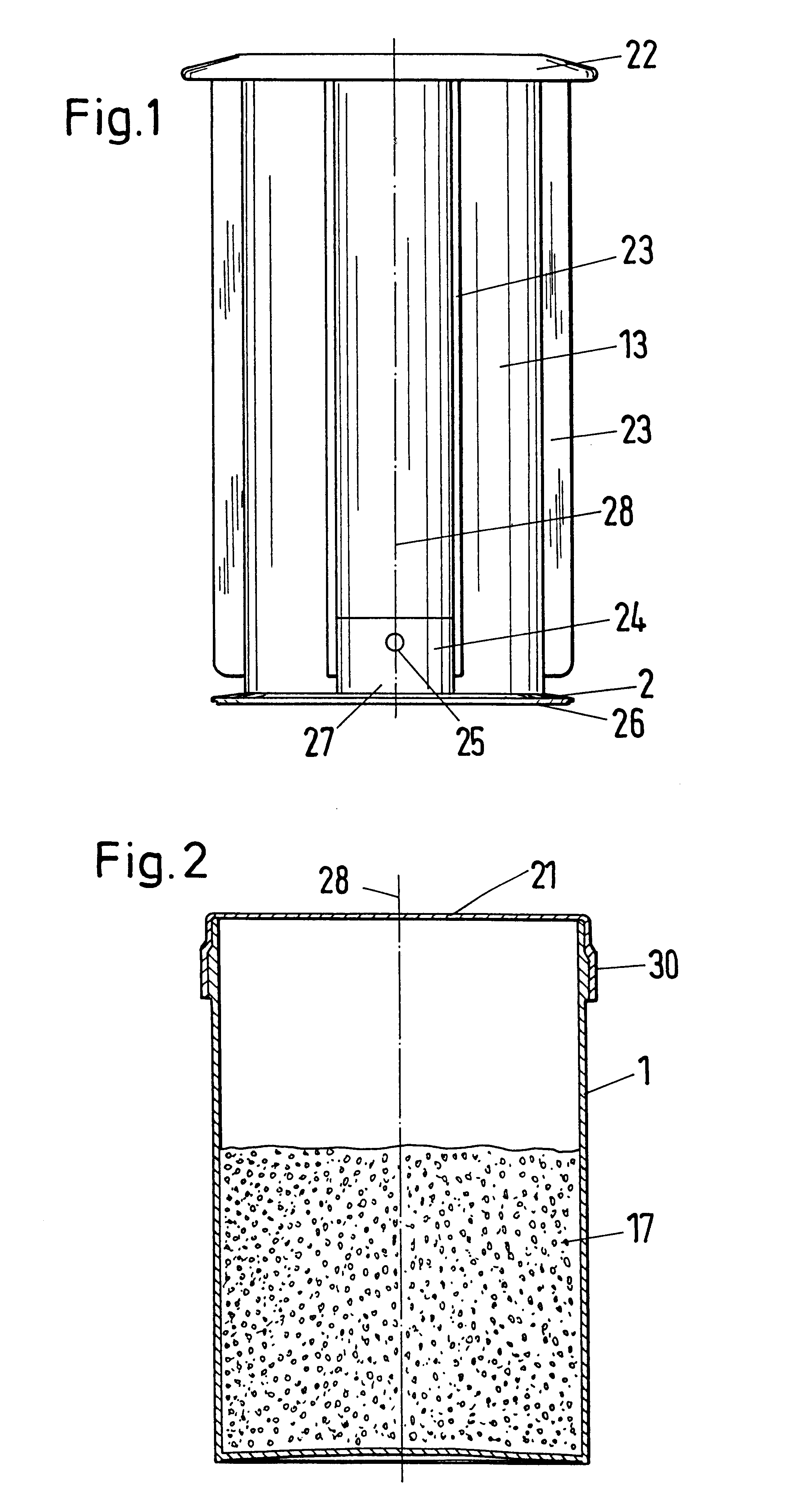Filling transfer apparatus for bone cement
- Summary
- Abstract
- Description
- Claims
- Application Information
AI Technical Summary
Benefits of technology
Problems solved by technology
Method used
Image
Examples
Embodiment Construction
A filling transfer apparatus for bone cement with a cylindrical, upwardly open mixing container 1 and with a filling transfer piston 2 which can be inserted therein, which is removably connected to the sleeve 4 of a cement injector 3 and which has an opening 5 through which the mixed bone cement 6 can be transferred into the sleeve 4 through a pressing down of the filling transfer piston 2 is illustrated in the figures. Inserted in the sleeve 4 in this is an ejection piston 7 which has an aperture 8 in the region of the opening 5 for the through-flowing cement which can be closed with a plug after the removal of the cement injector 3.
The reference symbols in the figures are used for similar concepts. Since such parts as the mixing container 1, the lid 21, the filling transfer piston 2, the cement injector 3 with the sleeve 4 and with the ejection piston 7 are throw-away parts with large production numbers, these are as a rule manufactured of thermoplastics in injection moulding mach...
PUM
 Login to View More
Login to View More Abstract
Description
Claims
Application Information
 Login to View More
Login to View More - R&D
- Intellectual Property
- Life Sciences
- Materials
- Tech Scout
- Unparalleled Data Quality
- Higher Quality Content
- 60% Fewer Hallucinations
Browse by: Latest US Patents, China's latest patents, Technical Efficacy Thesaurus, Application Domain, Technology Topic, Popular Technical Reports.
© 2025 PatSnap. All rights reserved.Legal|Privacy policy|Modern Slavery Act Transparency Statement|Sitemap|About US| Contact US: help@patsnap.com



